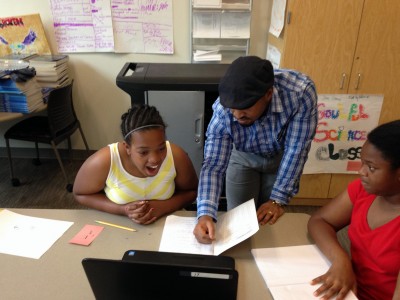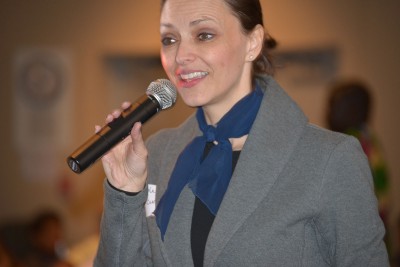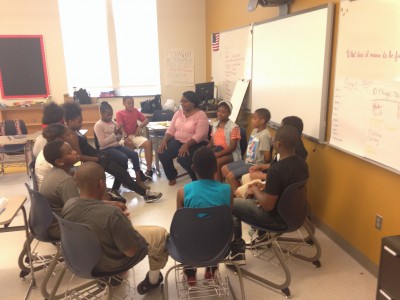
The District of Columbia Public Schools (DCPS) discontinued their gifted education programs in 2005 – and had no plans to serve the city’s most talented learners. But when high-performing students started leaving DCPS for private schools in the suburbs or area charter schools in search of gifted programs, DCPS Chancellor Kaya Henderson began searching for a gifted education program.
“A lot of feedback that the chancellor heard was that the students would like to stay in the district,” says Matthew Reif, director of advanced and enriched education at DCPS. “But the schools didn’t really have anything in gifted education to offer our children.”
In 2012, DCPS turned to Professor Joseph Renzulli, Neag School of Education researcher and internationally known expert in gifted education, for help. Renzulli, who developed the schoolwide enrichment model (SEM), already had a positive reputation in the school district with some key individuals.
Dr. Carey White, for one, who was serving as Henderson’s chief academic officer at the time, had been tasked with putting together the plan to bring back gifted education. White had experience, in a previous job, with SEM – a model designed to maximize the development of students’ abilities while helping to keep teachers engaged. The model includes everything from weekly sessions on special topics for teachers to the use of cutting-edge learning software.
Based in part on White’s recommendation, Reif says, “we decided we wanted to invest into Renzulli’s particular program.”
The Start of Something Special

DCPS implemented SEM with three schools that year, which has since expanded to about a dozen schools. Each of the participating schools has one dedicated SEM enrichment resource teacher who also helps with scheduling that enables the rest of the teachers in the school to offer enrichment clusters as well.
Enrichment clusters, Renzulli says, bring together “nongraded” groups of students for a half-day per week “to work cooperatively within a relatively unstructured learning environment that focuses on higher level thinking skills, creativity, and investigative modes of learning.”
“Our experience with schools has shown that we can guarantee authentic learning experiences for students if the overall weekly schedule devotes some time focused exclusively on this kind of learning,” he says.
DCPS worked with Renzulli and Nicole Waicunas – the program outreach coordinator with the Neag Center for Creativity, Gifted Education, and Talent Development and a former teacher at E.O. Smith High School in Storrs, Conn. – to facilitate on-site training at each of the schools. The first year, Waicunas visited several times, sometimes with Renzulli, to familiarize teachers with SEM and, as Waicunas says, to “help them figure out their students’ strengths and gifts – and to see where that might go.”
DCPS Expands Summer Programming for Gifted Education

When Chancellor Henderson more recently asked DCPS administrators to look next into implementing a summer program – one that was “outside the box” and that would enhance the gifted education opportunities even further for the school district – Renzulli introduced the district to the Renzulli Academy in Hartford.
Modeling its summer program after the Renzulli Academy, DCPS again partnered with Waicunas – along with Lisa Muller, executive program director in the Neag Center for Creativity, Gifted Education, and Talent Development – to design and implement the program.
This past summer, DCPS ran the four-week summer program for the second time, opening it up to students who, during the academic year, attend schools that may not yet have embraced SEM. Participants this past summer included 120 students, eight teachers, and two site coordinators at two schools.
The DCPS summer program has proven successful, with positive feedback from parents and teachers alike, Reif says.
“We know the SEM model is not some flash-in-the-pan, come-and-go kind of fad. It’s really helped us,” says Reif. “The bleeding of our students going to other schools has stopped.” At the same time, he says, “What we have noticed is the parents have been clamoring for these programs.”
Going forward, he adds, DPCS administrators are interested in capturing more in-depth data around measures of satisfaction with the program and are also seeking potential research opportunities with the Neag School of Education to further determine the programs’ effectiveness.
“Previously, we’ve had to close schools because of [lack of] student enrollment,” says Reif. “SEM has definitely helped us to market the schools to prospective students. We try other things to market our schools, but we have come to realize that it’s not just smoke and mirrors with SEM schools. There really is depth behind it.”
 Facebook
Facebook
 Twitter
Twitter
 LinkedIn
LinkedIn
